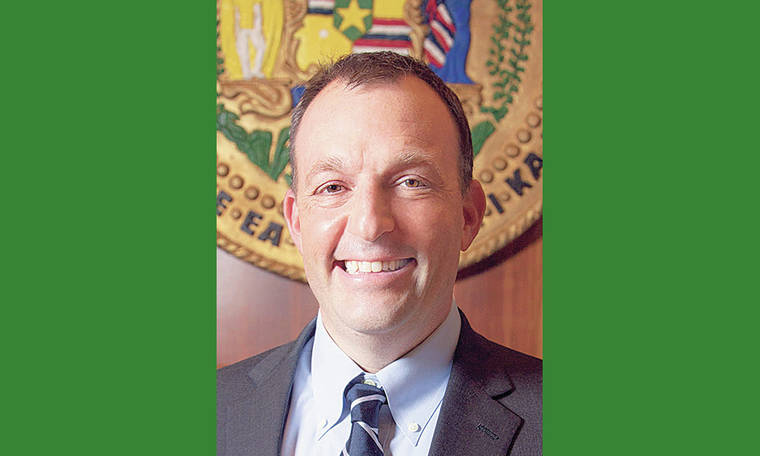Lt. Gov. Josh Green said Wednesday that if the daily statewide COVID-19 case numbers continue to be in the 150-200 range in a week, he’d advise Gov. David Ige “to do the full shutdown and go back to a four-week period of stay-at-home” mandates.
During a Honolulu Star-Advertiser Facebook Live stream, Green, an emergency room physician at Kohala Hospital, called the current case spike “a legitimate surge.”
“We have some of the highest transmission rates right now in the country,” he said. “And that’s a reflection of having had so few cases before. We had very little immunity.”
The state Department of Health reported 202 new coronavirus cases Wednesday and two new deaths, both Oahu men, upping the statewide death toll to 38. Of those new cases, 197 are on Oahu. Hawaii Island and Kauai each had two additional cases, while Maui reported one.
Overall case numbers as of Wednesday were: City and County of Honolulu, 3,558; Maui County, 191; Hawaii County, 135; and Kauai County, 51.
Green said the number of active cases statewide Wednesday was 2,256 and that 166 people were hospitalized because of coronavirus, “up from 105 five days ago.” He added officials are “preparing in every way to make sure our hospitals have the capacity to keep people alive, but we have to soften this spike.”
According to Green, state health officials are hoping some of the actions taken, such as more restrictions on parks, beaches and Oahu bars, will soon pay dividends.
“Everything we’re doing now, to not be in large groups, not be without a mask in front of other people to stop spreading it — the efforts we make today will be reflected five (to) seven days from now, and we’ll know then whether we can stay where we are and decrease the rate, or have to go harder lockdown,” he said. “It’s not what people want to hear. However, everywhere in the world, we know if you truly lock down you can stop the virus.
“And we were lucky to see an example of that already working. We know what’ll work. We know what the economic pain is based on unemployment. But we also know that we will emerge with a better situation for our hospitals.”
The state on Tuesday reinstituted a 14-day mandatory quarantine for interisland passengers arriving on the neighbor islands, but officially is still set to reopen to trans-Pacific travel without the current 14-day quarantine for travelers who arrive in Hawaii with a negative result on a COVID-19 test administered within 72-hours of flight boarding.
That Sept. 1 date, however, is expected to be pushed back once again by Ige.
With Labor Day on Sept. 7, Green fears a return of what he called “colossally stupid” behavior like the large gatherings that took place during the Fourth of July holiday that kick-started the current surge in cases.
“I can’t imagine that we’ll try to inject tourism Sept. 1 in advance of Labor Day, with all that’s going on still,” he said. “… I did not expect this to get to a place where we’re looking at 3- or 4,000 cases in a month,” he said. “That was unforeseen and pretty incredible to imagine.
“But that’s what the explosion of July 4 and a few bad decisions of large gatherings and street fairs and stuff will do to you. That’s what happens when you do that. And I know people don’t like to hear the harsh reality right in their face sometimes, but that’s my job, to keep people alive, and tell you, the best that I can tell, what will keep people safe.”
Asked when the state could safely reopen to tourism, Green replied: “It’s a global pandemic.”
“That’s why we have to wait to see what happens on the mainland before we open up again,” he said. “And we have to learn lessons from other places — whether they opened schools, whether they opened society, how much testing and tracing they did, all those things.”
On Tuesday, 2,253 people arrived at Hawaii’s airports, including 586 visitors and 773 returning residents. There were 30 arriving flights. That includes 56 visitors and 85 returning residents who arrived in Kona.
Green said the Department of Health is understaffed and overwhelmed and doesn’t have the resources at this point to effectively contact trace.
He said about 2,000 contact tracers, including retired health care professionals working as volunteers, are needed. He added that until an effective vaccine is developed, the goal is “to flatten the curve and to get the number of cases … to a place … where they will not overwhelm our health care system.”
“You get to that place where it’s actually manageable — where you can test and trace all the cases we need and account for all the care we have to deliver at the hospitals — (if) you get there, you can open up the schools, you can open up the trans-Pacific travel. You can do a lot of things,” he said. “Eradication of the disease will only happen probably four to six months after a vaccination is … fully globalized. And that’s going to take awhile.
“We’re probably going to get a vaccination somewhere between December and the spring, we don’t know when. … And when you get herd immunity in some other parts of the world, gradually the cases come down. The virus has nowhere to go.
“… When we get (statewide daily case numbers) back down to the 30s, 40s, as we were for many months, that’s when we know we can manage the hospital load.”
Email John Burnett at jburnett@hawaiitribune-herald.com.






